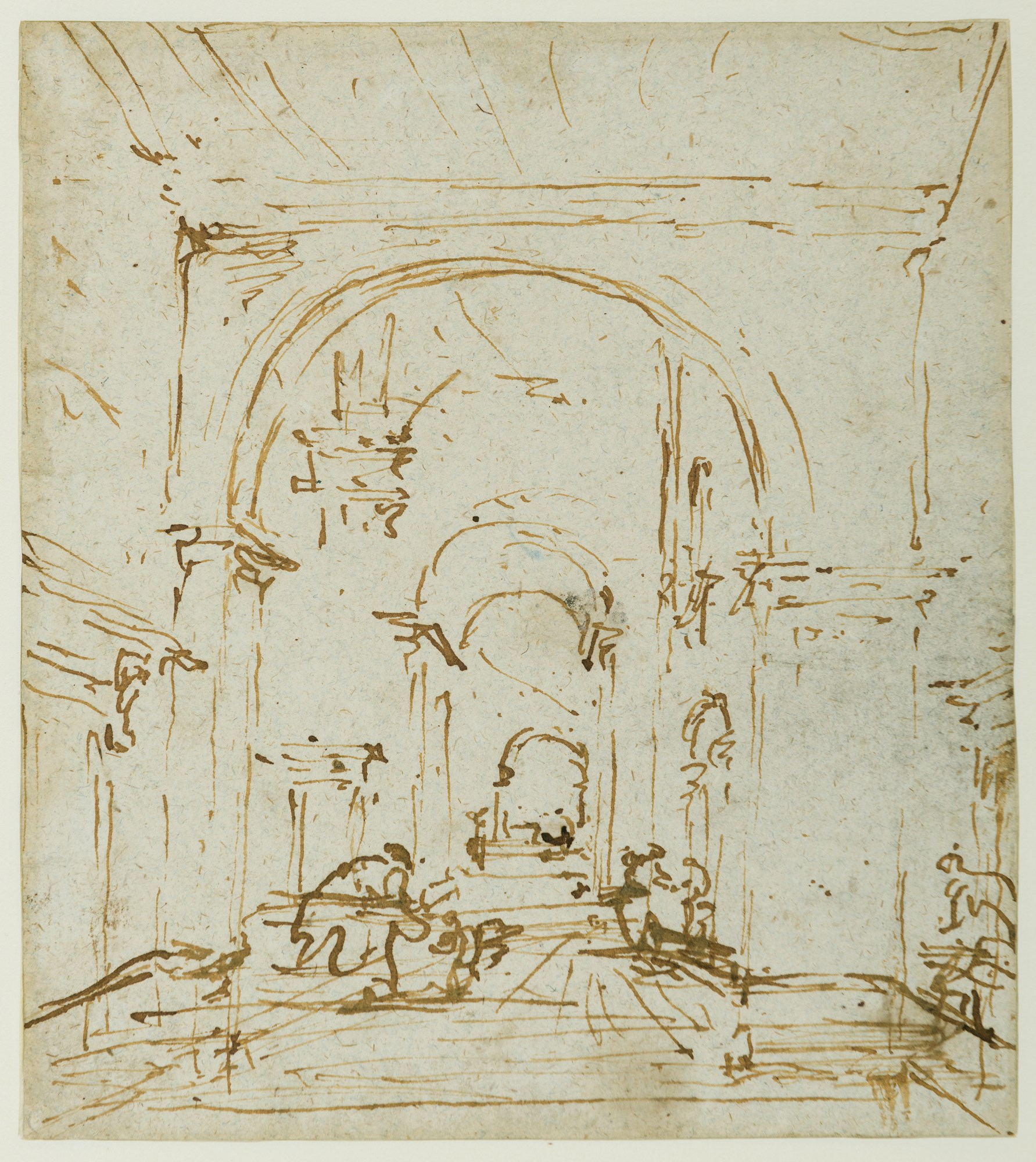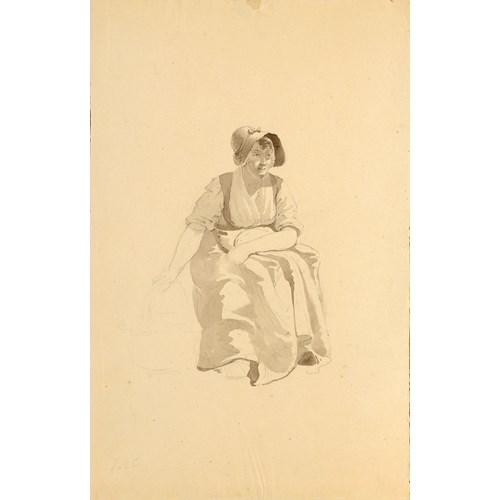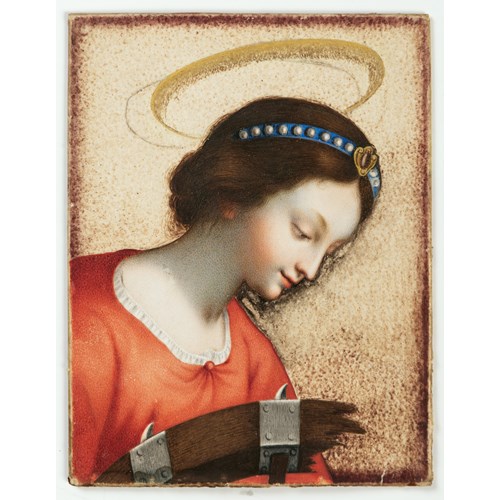Marketplace
Perspective Study of a Venetian Colonnade
The latter part of Francesco Guardi’s career found him painting numerous landscape capricci; imaginary views which often combined fantasy elements with recognizable Venetian motifs. Such works were part of a distinct Venetian tradition; indeed, as Michael Levey has commented, ‘the whole concept of the ‘caprice’ compositions, etched and drawn, in addition to being painted, seems a thoroughly Venetian one in its mixture of the factual and the fanciful, of the serious and the whimsical, asserting the freedom of the imagination.’ Furthermore, as the same author has pointed out, capricci subjects such as those painted by Guardi were perhaps more suited to Venetian taste: ‘Canaletto might be popular for his view-paintings with visitors and foreigners, the British most famously, but contemporary taste in the city probably tended to judge those works aesthetically inferior to invented, ‘capricious’ compositions.’
Guardi’s capriccio studies are perhaps the artist’s most individual works as a draughtsman. In his survey of Guardi’s drawings, published in 1951, James Byam Shaw noted that drawings of architectural capricci, such as the present sheet, were ‘evidently more to the taste of Venetian collectors than of foreign visitors at the time. The Venetian gentleman needed no souvenir: he could admire the gay scene in the Piazza any day of his life, or watch the Regatta, if he chose, from his balcony on the Grand Canal. But a Capriccio was something à la mode, a work of the imagination, a work of art. It is the Veduta ideata (imaginary view), as opposed to the Veduta presa dal Luogo(view taken on the spot)….but this particular category, which is so characteristic of Guardi, consists in the combination of motives taken from Venetian or other architecture, some of which are introduced with variations again and again…the Architectural Capriccio, whether in drawing or painting - and many of the drawings of this kind were adapted eventually on canvas or panel – is clearly distinct from the Venetian View in intention. It is a composition and not a view…even where a motive derives from the realities of the Venetian scene, the spirit is elsewhere, in the region of fancy.’
Drawn with a summary technique in pen alone, without wash, the present sheet may be compared with a handful of equally freely-drawn perspectival studies by Guardi of his late period, in particular a drawing of The Rialto Bridge with the Palazzo Manin in the collection of the Museo Correr in Venice, as well as two pen sketches of the Portico of the Torre dell’Orologio Looking Towards the Piazzetta and The Cortile of the Palazzo Soranzo van Axel, both also in the Museo Correr. Also comparable is an architectural sketch of the part of Rialto bridge on the verso of a drawing in the Pierpont Morgan Library in New York and a Vestibule and Staircase of a Palace in the Ashmolean Museum in Oxford.
Guardi’s capriccio studies are perhaps the artist’s most individual works as a draughtsman. In his survey of Guardi’s drawings, published in 1951, James Byam Shaw noted that drawings of architectural capricci, such as the present sheet, were ‘evidently more to the taste of Venetian collectors than of foreign visitors at the time. The Venetian gentleman needed no souvenir: he could admire the gay scene in the Piazza any day of his life, or watch the Regatta, if he chose, from his balcony on the Grand Canal. But a Capriccio was something à la mode, a work of the imagination, a work of art. It is the Veduta ideata (imaginary view), as opposed to the Veduta presa dal Luogo(view taken on the spot)….but this particular category, which is so characteristic of Guardi, consists in the combination of motives taken from Venetian or other architecture, some of which are introduced with variations again and again…the Architectural Capriccio, whether in drawing or painting - and many of the drawings of this kind were adapted eventually on canvas or panel – is clearly distinct from the Venetian View in intention. It is a composition and not a view…even where a motive derives from the realities of the Venetian scene, the spirit is elsewhere, in the region of fancy.’
Drawn with a summary technique in pen alone, without wash, the present sheet may be compared with a handful of equally freely-drawn perspectival studies by Guardi of his late period, in particular a drawing of The Rialto Bridge with the Palazzo Manin in the collection of the Museo Correr in Venice, as well as two pen sketches of the Portico of the Torre dell’Orologio Looking Towards the Piazzetta and The Cortile of the Palazzo Soranzo van Axel, both also in the Museo Correr. Also comparable is an architectural sketch of the part of Rialto bridge on the verso of a drawing in the Pierpont Morgan Library in New York and a Vestibule and Staircase of a Palace in the Ashmolean Museum in Oxford.
Provenance: Adolphe(?) Verdé-Delisle, Paris(?)
Thence by descent in the Verdé-Delisle family to a private collection, Belgium
Anonymous sale, Neuilly-sur-Seine, Hôtel de Ventes [Aguttes], 27 March 2012, lot 18 (as Attributed to Francesco Guardi)
Jean-Luc Baroni Ltd., London, in 2014
Private collection, New York.
More artworks from the Gallery









